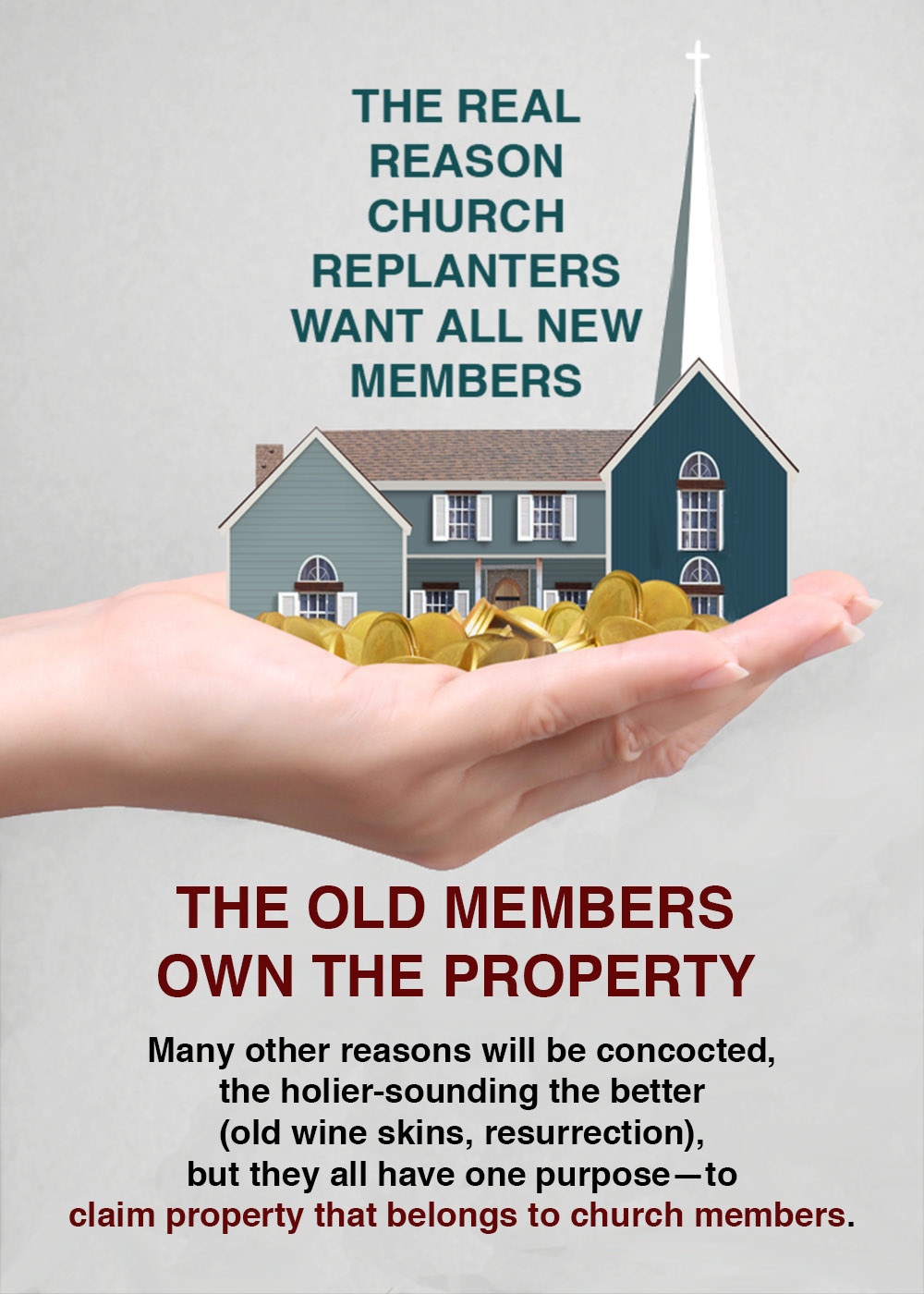 Eight Years Locked Out of Church on Christmas Eve
Eight Years Locked Out of Church on Christmas Eve
and every other day, for that matter.
Every year for the last seven years, the Lutherans of East Falls—locked out of our own property by the Southeastern Pennsylvania Synod (ELCA) in a budget-balancing land grab—checked in with the Lutheran Grinch to see if conscience had yet to kick in.
Year eight. An opportunity to do the right thing in a way that was right and feasible and perhaps in keeping with mission is now gone.
But Redeemer Whoville is still here! We’ll gather around the relics we saved from the church—not allowed by the synod but by the developer that purchased our land for a song.
The Grinch of Whoville was able to breach the wall between evil and good. That Grinch pondered the effects of his greed and changed his ways. He at last could stand with the people of Whoville and sing with joy and a growing heart. It’s supposed to make us think of the Christmas message if the Bible doesn’t hit home.
Neither is likely to happen in Lutheran Whoville.
There will be no reflection. The Lutheran Grinch sits on the hill overlooking their 150 or so congregations and never sees the people of their Whoville.
Reflection is not part of the popular “discernment” process. The need to win and save face stood in the way of reason and principle. There were no doctrinal differences, no issues requiring church discipline, no financial distress necessitating intervention. There was plenty of “fake” news—unsubstantiated stories about horrible things that simply were untrue. We were probably the fastest growing church in a synod where numbers are down in almost every congregation. The synod had ignored us since 1998, following their published strategy of ignoring small congregations for ten years to facilitate decline. They didn’t know anything about us in 2008. They cited 1990s statistics to the rest of the synod. We pointed out the “big lie.” No one was listening. No one was asking questions—nor were they encouraged to.
SEPA was successful in their land grab. At what cost? Six years of lawsuits—during which the building deteriorated in appraisal value from $1.5 million to $350,000—ate up the coveted pie.
Leaders without a strategy, tend to rely on destruction to demonstrate power.
The long-term effects set an unhealthy precedent. Much needed innovation will not happen in congregations for fear of intervention.
SEPA’s tactic to sue individual church members should be very disturbing to all church leaders. A desire for safety and security clouds the sense of right/wrong.
CHURCH HISTORY—UNEXAMINED
In most historical contexts, there are people who look back at the decisions of leadership and measure the results to see if popular decisions ended up to be foolish or wise. Leaders with perceived mediocre promise (Harry Truman) end up wearing history’s halo. Popular leaders (Hitler) are condemned.
Churches don’t examine church history in the light of self-discovery or improvement. Did that pastor that everyone loved move the congregation forward or were those happy years the onset of decline? Were those lay people who raised questions trouble makers, or did their concerns prove to be valid?
The Redeemer decision—made with overwhelming acceptance of a synod assembly acting outside their constitutional powers—wise or even Christian? Only one church asked back then (Old Zion). None have asked since. It became Church at its worst, something akin to a Lutheran Hunger Games, with fluid rules and and tactics designed to inflict maximum damage.
The now eight-year-old decision that SEPA won in a weird way should give all Lutherans pause. The final court decision was that if the law were applied Redeemer’s arguments have merit, but the courts cannot enforce church law. In other words, Redeemer was right to challenge SEPA! SEPA’s actions were questionable. Our fellow Lutherans failed in their duty to provide the checks/balances.
Let’s look back at a few of the results of a power run unchecked.
ROOTS OF THE DECISION
SEPA Synod was routinely operating on a significant deficit budget. Closing churches in a way that guaranteed the assets went to the synod became a goal. Problem: it violates the founding agreement between the synods and congregations. Congregations have the right to vote on their future and to disperse property as the congregation wishes (within charitable guidelines). SEPA Synod usurps this right by invoking an unconstitutional tactic they call Involuntary Synodical Administration. This violates the agreement member congregations that joined the ELCA made only 27 years ago. The founding constitution allows for VOLUNTARY synodical administration, done with a vote of the congregation. But SEPA made up an INVOLUNTARY form to side-step congregational rights and take control of congregational assets. It is a form of theft. Even the wording: Taking the control of property and assets without the consent of the congregation and administering assets for the synod’s benefit is the definition of theft. Use fancy words. No one notices.
POTENTIAL IMPACT: Sooner or later, church leaders can expect to be challenged. This happened in East Falls. Christian beliefs and teachings ceased to matter. Winning mattered.
MISSION STRATEGY
The leadership theory that was published in a book by Bishop Claire Burkat a few years before she put it into practice in East Falls states that the best way to manage a struggling church is to close it for a few weeks, remove signage, and reopen under a new leadership with NONE of the existing members permitted to participate. Where did they get such nonsense?
Church leaders see things from a clergy point of view. When a pastor leaves a church, they are advised to stay out of their previous parish to avoid conflicts with new leadership. This theory does not transfer to church members. Church members still live in the community and church leaders are likely also to be community leaders. Banishing them is easier said than done. Interestingly, another such SEPA experiment in which the synod closed a church and took possession of congregational assets received acclaim in the early years. They reopened to great fanfare with 70 or so charter members. A few years later, the parish statistics reflected far fewer members. No fanfare about this. Reported success. Unmentioned failure.
All the theory obscures the real reasons to wish church members gone.

UNFORESEEN IMPACT: Leaders fail to understand the value of land and tradition. They also fail to realize that in small churches, a lot of people are related by both blood and social circles. Scratch off a few problem lay members and you’ve riled a whole neighborhood. Working class East Falls residents sacrificed to provide prime real estate in our community to ensure a faith presence beyond their own lifetimes. They didn’t just build a shack. They invested their labor and wages to create beauty. Bishop Burkat’s attack on our congregation ended up predictably with the sale of the church. They sold it at least twice. An early sale was to a nonprofit that was willing to work with Redeemer members to establish Christian day school in the space they once owned. When the synod found out, they used tactics that would embarrass faithful Lutherans to regain rights to the property. Then they sold it to developers, of course. Urban land always has greater commercial value than monetary mission value. These developers were also willing to work with Redeemer members. Remember, we still live here! We were close to raising the money, but it was difficult. After all, SEPA took our endowment funds, too. We had only a few months and came very close. The land so carefully provided for mission in our community will be apartments. Our school has already been leveled for town houses. That’s the impact on Redeemer. For all regional Lutherans, it will be almost impossible to influence all of northwest Philadelphia (population 200,000+ and where SEPA is headquartered) will soon be next to impossible.
The loss to the community is even worse. The school we had planned is needed far more than five new houses. Our land as a cultural hub for many community groups is now gone and difficult to replace as available land in urban neighborhoods is now economically steep.
THE REALITY FOR URBAN LUTHERANS
Our experience is representative. Most of our members were life-long Lutherans—some in America, others from Africa. We remain Lutheran in a neighborhood where other Lutherans have been unkind. We are still active in our community and we speak up for our continued presence, our history and our traditions. We are learning a lot. We are seeing what the future of faith communities in urban neighborhoods are likely to look like. We learned we were dong a lot right. We were growing diverse in a natural, organic way. Our membership was young in a church body that is adopting a new liturgical color of gray. We would not have been growing had we followed the advice of church consultants. Their predictions made in the 1990s—that demographics did not favor mission—we now know were baloney.
Redeemer was here long enough to experience, understand, and be part of real societal change. During this time, the Lutheran church was unable to provide adequate leadership. The suburbs called. Redeemer, largely lay-led, worked through the problems. East Falls is now a melting pot of diversity. We have experience we could be sharing.
EAST FALLS and NW PHILADELPHIA TODAY
East Falls, along with neighboring communities of Manayunk, Wissahickon and Roxborough, are among the fastest growing neighborhoods in Philadelphia. They are also the youngest neighborhoods. SEPA’s leadership has positioned Lutherans to miss a true opportunity for long-term mission. The era of White Flight was a challenge! We turned the corner, partly because we stayed in the city. For the first time since the 1970s, people are finding urban neighborhoods attractive places to raise families. Redeemer would be in a position to be truly helpful as our neighborhood continues to transform. But SEPA administered our assets for their benefit.
The Lutheran Grinch still sits at the top or the hill in Northwest Philadelphia carefully waiting to sled down the hill and take as much as they can carry. Just three churches left. Probably not for long!


 Debate will be limited. Those raising questions will get a minute or two at a microphone.
Debate will be limited. Those raising questions will get a minute or two at a microphone.


